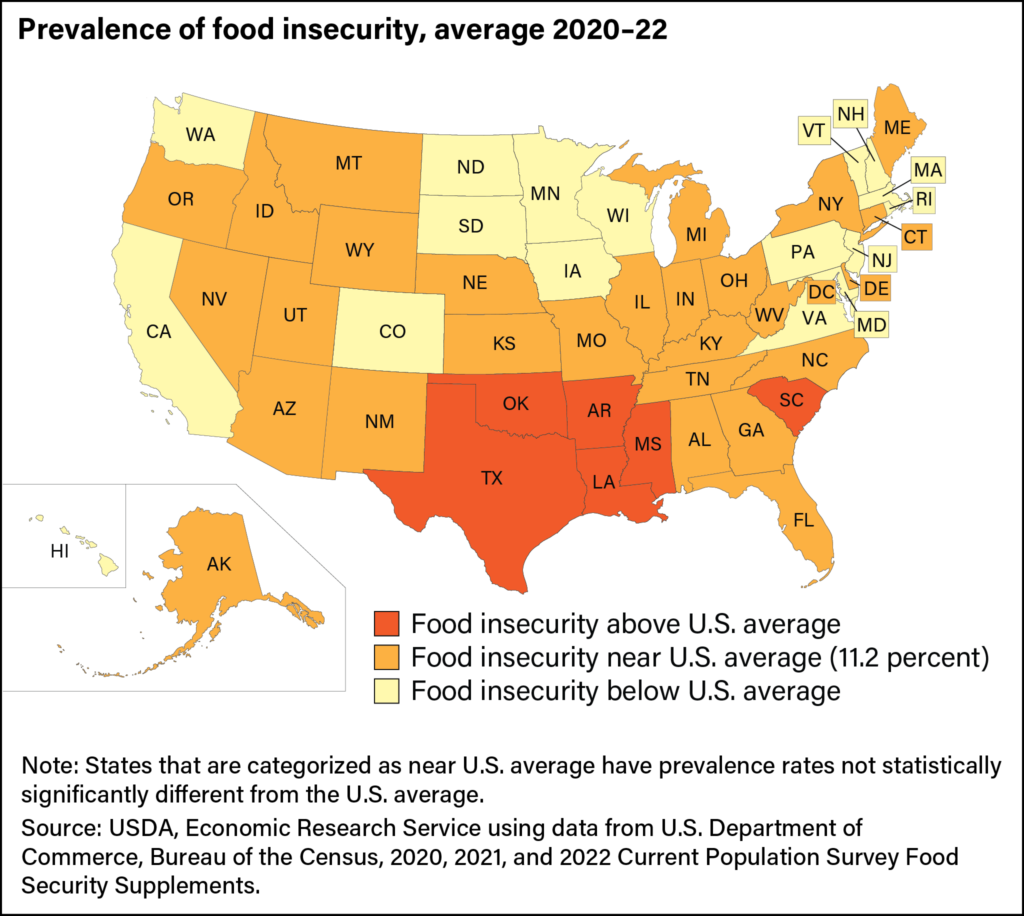
By Juliet Porter.
Food justice refers to the holistic, structural perception of the food system which views access to healthy food as a human right and simultaneously addresses obstacles in the way of the right. Directly stemming from the concept of environmental justice, food justice emphasizes the importance of putting disadvantaged and minority groups at the center of the debate.
Various factors contribute to one’s ability to access healthy, fresh foods, many of which are uncontrollable. For example, BIPOC individuals and those in a lower socioeconomic bracket are more likely to reside in food deserts. A food desert refers to a geographical area where residents’ access to affordable, fresh, and healthy food options is severely limited or non-existent due to a lack of grocery stores within a convenient travel distance of one’s home. Lack of personal vehicles and unreliable public transportation exacerbates the issue of food deserts. For instance, according to a report by the Economic Research Service of the US Department of Agriculture prepared for Congress, 2.3 million people, or 2.2% of all US households live more than one mile away from their closest supermarket and also don’t own a car.
Food deserts are the most prevalent in black and brown communities as well as low-income areas, where car ownership is low. Studies have proven that wealthy neighborhoods have as many three times more supermarkets as low income ones do and white neighborhoods have roughly four times the amount of supermarkets as black neighborhoods while grocery stores in black neighborhoods tend to be smaller, offering a selection with minimal variety.
Living in a food desert and being prone to food insecurity is directly correlated with poor health as researchers have established a strong correlation between food insecurity and increased rates of diabetes. In fact, the highest rates of escalation of diabetes have been identified among Native American youth as well as African Americans and Latinos of all age groups. These groups tend to be those that are the most likely to live in food deserts. Those living in food deserts experience food insecurity. It’s estimated that food insecurity is the most prominent in rural communities. While 63% of communities in the U.S. are characterized as rural, these areas are overrepresented in the food insecurity scene with them making up 87% of counties with the highest rates of food insecurity. Data from the US Census Bureau found that approximately 27 million Americans experience food insecurity as of July 2023. Some sources, such as Feeding
America, estimate that this number is even higher, sitting around 34 million Americans.

The food justice scene is rapidly growing as public awareness continues to be raised and more media attention is devoted to the topic largely due to the work of community activists. Earlier this year, in January 2023, Democratic lawmakers discussed eliminating food deserts as a
mechanism to reduce the prevalence of diseases, like diabetes, affecting African Americans. Representative Robin Kelley, a Democrat from Illinois, emphasized how reducing food deserts is likely one of the most effective methods in curbing diet-related illnesses. As the epidemic of food insecurity becomes more publicized, it’s likely that there will be more legislative wins within the upcoming years.
